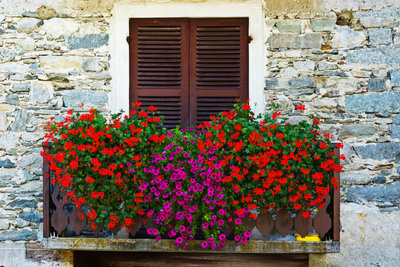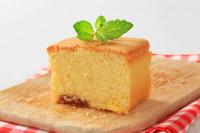Are geraniums frost-proof?
Geraniums are easy to care for and bloom tirelessly until autumn. Even then, these perennial plants are far too good to throw away. Depending on the variety, this perennial from the cranesbill family is frost-proof. However, you must note that “frost-proof” or “hardy” are vague terms. In addition, you need to make some preparations for wintering.

What you need:
- Hand shovel
- Secateurs
- Flower pots
- Brushwood, straw or garden fleece
- Bubble wrap
- Plant sack made of jute or linen
- Styrofoam plate
Not all geraniums are created equal
The term “geranium” causes confusion over and over again. These include various representatives of the cranesbill family, which, depending on the species, are also frost-proof.
- Colloquially, the term "geranium" has become for the one that is so popular with us Balcony plants naturalized. However, their botanical name is correctly "Pelargonium".
- Most pelargonium species originally come from Africa, Arabia and the Middle East. The first specimens were released in the early 17th Cultivated in Europe in the 19th century.
- Pelagornias also have to withstand occasional light frosts in their natural habitat. At temperatures below minus five degrees, however, they inevitably die. So you have to expect that your pelargoniums won't survive a German winter on the balcony. In addition, you have to pay attention to a place sheltered from the wind even when there is little frost. Because the so-called "wind chill" factor intensifies the low temperatures.
- The actual geranium with the botanical name “Geranium” (in German “Storchschnabel”), on the other hand, is frost-proof and therefore hardy. This smaller variety from the cranesbill family occurs on all continents. These grow as a wild form Geraniums even in the polar regions. We often offer the new breed “Burcs Double”, which is suitable for outdoor beds as well as a container plant.
- In general, geraniums prefer cooler weather and are considered hardy. You need to remember, however, that “hardy” is a relative term. Even this robust outdoor plant will not survive an extremely cold winter with days of permafrost below minus ten degrees
Winter hardy geraniums - the hobby gardener is happy because storing the geraniums ...
Hibernate balcony geraniums
Pelargoniums are often simply disposed of after summer. But these plants are perennial. After proper wintering, they sprout again in spring.
- At the latest when the weather forecast predicts temperatures below minus five degrees, you should bring your pelargoniums into the house.
- To overwinter you must first pot the pelargoniums. Carefully remove the loose soil. Be careful not to damage the small fine roots.
- Cut back all the shoots sharply with secateurs. It is completely sufficient if only two or three thickened nodes remain on each side branch.
- Carefully remove all leaves. Pests like to nestle here or the leaves are attacked by diseases.
- Bundle three to four plants at a time and place them in flower pots.
- Cover the plants loosely with a mixture of sand and potting soil.
- Put the flower pots in a bright but cool place in the house. The temperature should be five to ten degrees. For example, the stairwell near the window or a Garden shed.
- Keep the flowers slightly moist throughout the winter.
- As soon as the frost period is over in spring, put the plant back in fresh potting soil. Now the pelargoniums can go back to the balcony, where they will show their bloom again after a few weeks.
Make the outdoor shrub frost-proof
Storage over the winter months does not apply to the geranium variety. Nevertheless, you must also make this perennial perennial frost-proof for wintering outdoors.
- For bedding plants, it is best to choose a protected location when you plant them. A sunny or only moderately partially shaded spot is ideal. It is best to place potted plants in a sheltered place in winter, for example on the house wall.
- Like the balcony pelargoniums, you must also prune back the outdoor variety generously in autumn and remove all leaves.
- Cover bedding plants with a layer of brushwood, straw or garden fleece.
- You have to isolate potted plants so that the plants do not freeze completely. To do this, wrap the plant crown with garden fleece or a jute or linen sack. Also put brushwood or garden fleece around the trunk. In very cold regions you can also wrap the pot with bubble wrap. Finally, place the bucket on a styrofoam plate.
- Plants are prone to pest infestation, especially in mild winters. Regularly inspect the flowers and remove any pests immediately.
- Remove the cold insulation again in March. Now the plants are watered again. From the end of May you will also give one twice a month fertilizer.
Neither balcony geraniums nor free-range geraniums are completely frost-proof. However, with the right preparation, these pretty plants will survive the winter.
How helpful do you find this article?

